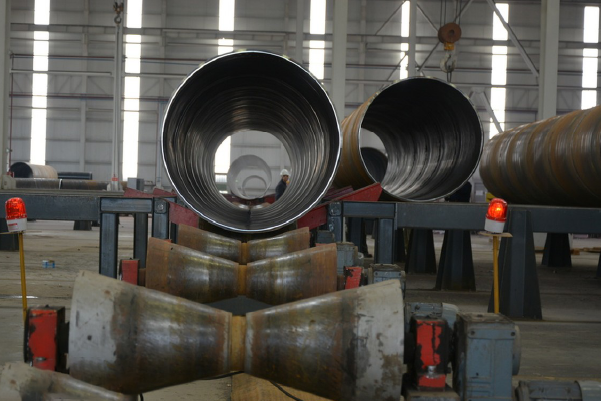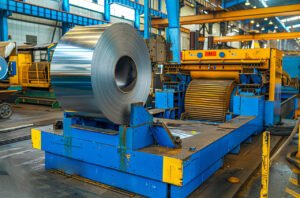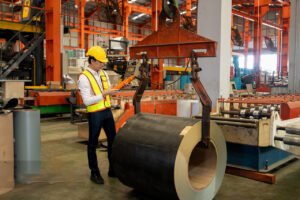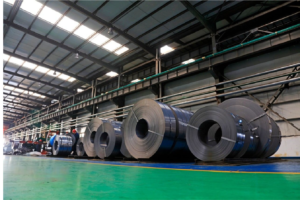Duplex Stainless Coil for Desalination Plants: The Definitive Material Guide
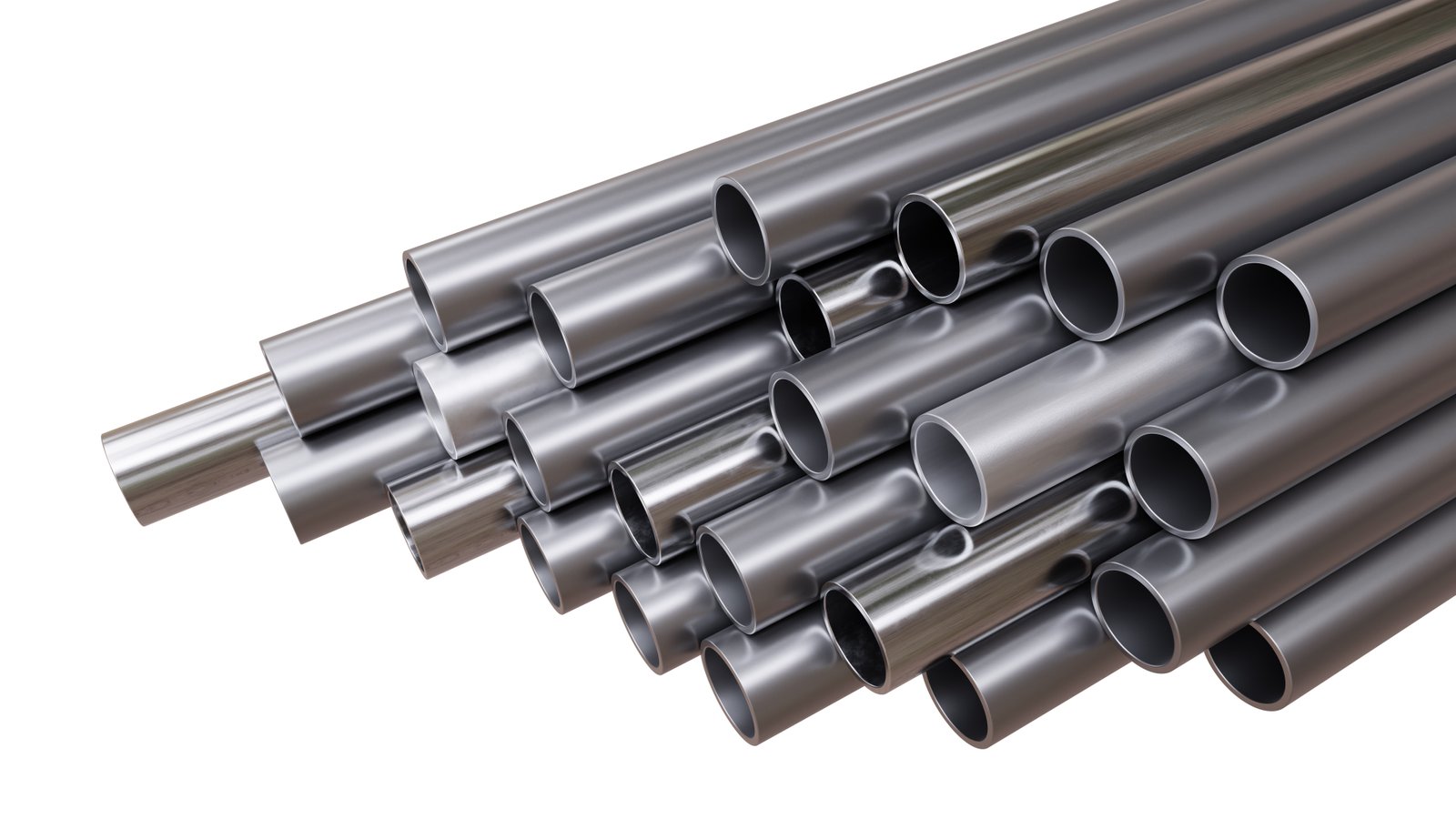
Are you grappling with material failures and soaring maintenance costs in your desalination operations? The relentless attack of saltwater corrosion on essential infrastructure1 is a severe problem, leading to costly downtime and operational instability that can cripple a plant’s long-term financial health. The solution lies in choosing a material engineered to thrive in such harsh conditions, and duplex stainless steel is that superior choice.
Duplex stainless steel coil is a critical material for desalination plants due to its dual-phase microstructure, which provides an unmatched combination of high strength and exceptional resistance to chloride-induced corrosion. This makes it the most reliable and cost-effective solution for ensuring the long-term integrity and efficiency of high-salinity environments.
Choosing the right material is one of the most consequential decisions in the lifecycle of a desalination plant, directly impacting everything from construction costs to decades of operational performance. It’s a choice that defines reliability. As we navigate the complex demands of modern water production, understanding the specific advantages of advanced stainless alloys2 is no longer optional—it's essential for building a resilient and profitable future.
At MFY, we’ve seen firsthand how strategic material selection can transform a project's viability. The shift from traditional materials to advanced alloys like duplex stainless steel isn't just an upgrade; it's a fundamental change in approach, prioritizing lifecycle value over short-term savings. This move is driven by the increasing scale and technical demands of new desalination projects, especially in high-temperature regions like the Middle East. The data is clear: the superior corrosion resistance and mechanical strength of duplex grades lead to significantly lower maintenance requirements and a longer plant lifespan, justifying the initial investment many times over.
Why is duplex stainless steel important in the context of desalination plants?
Are you struggling to find a material that can withstand the intensely corrosive environment of a desalination plant without compromising on strength? The constant battle against chloride pitting and crevice corrosion3 can feel relentless, leading to operational risks and escalating maintenance budgets that erode profitability. Duplex stainless steel provides a robust solution, combining the best properties of austenitic and ferritic steels to ensure unparalleled performance and plant integrity.
Duplex stainless steel is fundamentally important for desalination plants because of its high chromium, molybdenum, and nitrogen content. This specific alloying provides outstanding resistance to chloride stress corrosion cracking (SCC) and pitting, along with nearly double the strength of standard stainless steels, ensuring durable and cost-effective operations.
The significance of duplex stainless steel in desalination cannot be overstated; it represents a pivotal advancement in materials science that directly addresses the industry's most pressing challenges. In my role, I frequently speak with engineering contractors who are designing facilities intended to operate for 30 years or more. Their primary concern is always long-term reliability. A material that fails prematurely not only incurs replacement costs but also leads to non-productive downtime, which can cost a large-scale plant hundreds of thousands of dollars per day. The unique dual-phase microstructure of duplex steel, comprising a balanced mix of austenite and ferrite, is the source of its remarkable properties. This structure inherently resists the environmental factors that plague lesser materials in saline environments, such as the warm, highly oxygenated seawater found in intake systems or the aggressive, concentrated brine reject from reverse osmosis (RO) units. This built-in resilience is why duplex has become the benchmark material for critical applications, offering project developers and operators peace of mind that is simply unattainable with traditional grades like 316L or coated carbon steel.
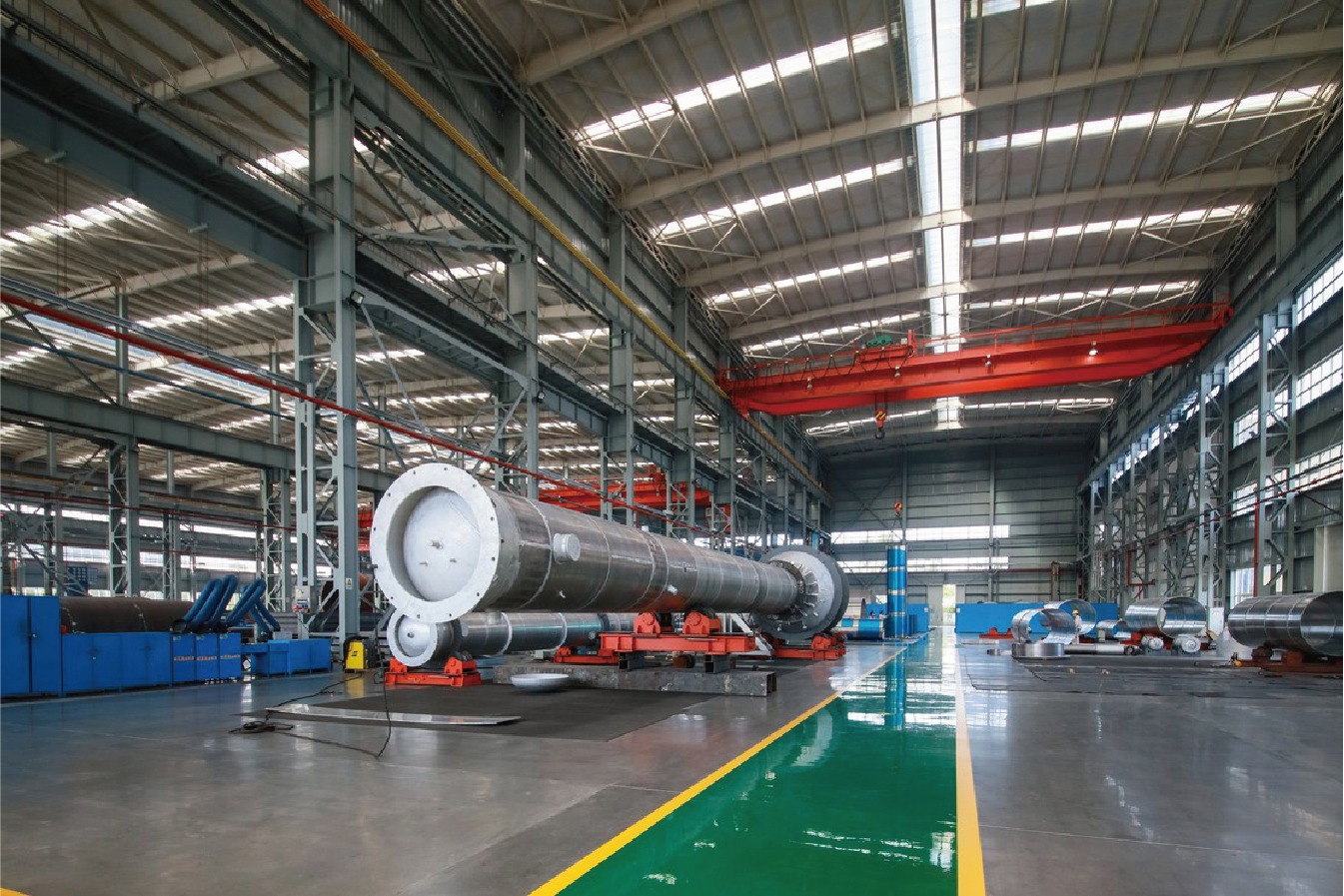
The move toward duplex is not merely a trend but a strategic necessity driven by a deeper understanding of lifecycle cost analysis. A client of ours, an EPC firm building a new facility in the UAE, initially considered using 317LMN for their high-pressure piping to save on upfront costs. However, after our technical team presented a comparative analysis based on the Pitting Resistance Equivalent Number (PREN) and projected maintenance cycles in the region's high-temperature, high-salinity seawater, the conclusion was inescapable. The risk of premature failure from pitting and crevice corrosion with the 317LMN grade was unacceptably high. By investing in Super Duplex 2507 (with a PREN > 40), they secured a system designed to last the entire life of the plant, eliminating future risk and ensuring stable water production for their community. This is the tangible impact of choosing the right material from the start.
The Superior Corrosion Resistance Mechanism
The primary reason duplex steel excels in desalination environments is its carefully engineered chemical composition, designed specifically to combat chloride-induced corrosion. The high percentage of chromium (typically 22-26%) is the first line of defense, forming a tenacious, self-healing passive oxide layer on the steel's surface. This layer protects the underlying metal from the corrosive effects of seawater. When this passive layer is compromised, other elements spring into action.
Molybdenum (typically 3-5% in super duplex grades) is crucial for enhancing resistance to localized corrosion, particularly pitting, which is the most insidious form of corrosion in stainless steels exposed to chlorides. Nitrogen is another key alloying element; it works synergistically with molybdenum to further stabilize the passive layer and significantly increases resistance to crevice corrosion, a common issue in flanged joints and under deposits. This potent combination is quantified using the Pitting Resistance Equivalent Number (PREN), calculated as PREN = %Cr + 3.3 %Mo + 16 %N. The higher the PREN, the greater the corrosion resistance.
To illustrate this, consider a typical application in a reverse osmosis plant. The brine reject stream has a chloride concentration that is nearly double that of seawater and is often at elevated pressures. Here, a standard austenitic steel like 316L, with a PREN of around 25, would be highly susceptible to failure. In contrast, Duplex 2205 (PREN > 35) or Super Duplex 2507 (PREN > 40) provide a substantial margin of safety, ensuring the integrity of the piping for decades. We recently supplied Duplex 2205 coils to a fabricator in India who was manufacturing pressure vessels for a mid-sized desalination unit; the client’s specification explicitly mandated a minimum PREN of 35 to guarantee performance, a standard that duplex steel easily meets.
Unmatched Mechanical Strength and Weight Savings
Beyond corrosion resistance, the exceptional mechanical strength of duplex stainless steel is a game-changing advantage for designers and engineers. Duplex grades exhibit a yield strength that is approximately double that of common austenitic grades like 304 and 316L. For example, the 0.2% proof strength of Duplex 2205 is around 450 MPa, whereas 316L is about 220 MPa. This superior strength has profound practical and economic implications for a desalination project.
The most direct benefit is the ability to design components with reduced wall thickness. For high-pressure piping, pressure vessels, and even structural elements, the higher strength allows engineers to use thinner, lighter sections while still meeting all safety and pressure-rating requirements. This "down-gauging" leads to a cascade of savings. It starts with a direct reduction in the total tonnage of steel required, which lowers the initial material procurement cost.
This weight reduction continues to deliver value throughout the project lifecycle. Lighter components are cheaper to transport to the project site, especially for international projects where shipping costs are significant. They are also easier to handle and install, potentially reducing the need for heavy lifting equipment and shortening construction timelines. Finally, the reduced dead weight of the piping and equipment lessens the load on structural supports, foundations, and buildings, which can lead to further savings in civil engineering costs. A distributor we partner with in Southeast Asia regularly emphasizes this benefit to their contractor clients, demonstrating how using MFY's duplex coils for fabricating pipe spools can lead to a 15-20% reduction in overall installation costs compared to a traditional 316L system.
Economic Viability: Lifecycle Costing vs. Upfront Investment
While the upfront procurement cost of duplex stainless steel is higher than that of 316L or coated carbon steel, a comprehensive economic analysis overwhelmingly favors duplex for critical desalination applications. The key is to shift the perspective from initial capital expenditure (CAPEX) to total lifecycle cost (LCC) in industrial project material selection, which includes not only the initial purchase but also the costs of installation, inspection, maintenance, and potential replacement over the plant's operational lifespan.
Traditional materials, while cheaper at the outset, introduce significant long-term financial risks. Carbon steel requires specialized coatings that must be diligently inspected and reapplied, and it will eventually corrode and require replacement. Austenitic stainless steels like 316L, when pushed beyond their performance limits in warm, aggressive seawater, can fail prematurely due to pitting or stress corrosion cracking. The cost of such a failure is not just the material and labor for the repair; it includes the massive financial loss from plant downtime, which can quickly dwarf any initial savings.
In contrast, duplex and super duplex steels are designed as "fit-and-forget" solutions for these environments. When the correct grade is selected and properly installed, it can be expected to last the entire 30- to 40-year design life of the plant with minimal maintenance. The following table provides a simplified comparative analysis:
| Характеристика | Coated Carbon Steel | 316L Stainless Steel | Duplex 2205 Steel |
|---|---|---|---|
| Первоначальная стоимость | Низкий | Средний | Высокий |
| Стоимость установки | High (Coating) | Средний | Medium-Low (Lighter) |
| Устойчивость к коррозии | Low (Coating Dependent) | Умеренный | Очень высокий |
| Техническое обслуживание | High (Recoating) | Moderate (Inspection) | Очень низкий |
| Lifecycle Cost | Высокий | Средний и высокий | Низкий |
| Risk of Failure | Высокий | Умеренно-высокий | Очень низкий |
A project we supplied in the Middle East illustrates this perfectly. The client chose Super Duplex 2507 for their entire brine handling system. Their analysis showed that the break-even point, compared to a proposed 317LMN alternative that would have required replacement after 15 years, was reached in just eight years. For the remaining 22+ years of the plant's life, they will realize substantial savings, proving that the wisest investment is in long-term reliability.
What are the current applications of duplex stainless coils in desalination plants?
Are you uncertain where exactly duplex stainless steel can deliver the most value within your desalination facility? Misapplying materials can lead to over-engineering in some areas and catastrophic failures in others, wasting precious capital and introducing unacceptable operational risks. By identifying the most critical applications for duplex stainless coils, you can strategically enhance your plant's durability and performance exactly where it matters most.
Duplex stainless coils are currently applied in desalination plants to fabricate high-pressure piping, heat exchanger tubes, pressure vessels, pumps, and valves. Their use is concentrated in areas handling concentrated brine, seawater intake, and within reverse osmosis membrane housings where superior strength and corrosion resistance are essential.
The versatility of duplex stainless steel allows it to be a cornerstone material across the entire spectrum of modern desalination technologies, from Reverse Osmosis (RO)4 to thermal processes like Multi-Stage Flash (MSF) and Multi-Effect Distillation (MED). At MFY, our coils are used by fabricators to create a vast array of components, each leveraging the unique benefits of duplex. For instance, in an RO plant, the high mechanical strength is critical for the high-pressure pipework, while in an MSF plant, the excellent resistance to erosion-corrosion is vital for heat exchanger tubing. This adaptability simplifies the supply chain for large projects. I recall working with a major EPC contractor on a project in Southeast Asia; they were constructing a hybrid facility combining both RO and MED technologies. By sourcing all their duplex coil requirements from MFY, they were able to streamline their procurement and ensure consistent material quality for everything from the massive brine recirculation pipes to the intricate internal components of the evaporators. This holistic application of duplex steel not only enhances the physical resilience of the plant but also creates efficiencies in project execution, demonstrating its value from the fabrication shop to the operational floor.

The strategic application of duplex steel is a testament to the industry's evolution towards more robust and efficient design philosophies. It's about placing strength and resilience precisely where the operational stresses—both mechanical and chemical—are at their peak. This isn't just about preventing corrosion; it's about building systems that are inherently safer and more reliable. A leak in a high-pressure RO pipe, operating at up to 80 bar, is a significant safety hazard. The high strength and toughness of duplex steel drastically reduce the risk of such failures. Similarly, in a thermal plant, the integrity of the heat exchanger tubes is paramount for maintaining thermal efficiency and preventing cross-contamination between brine and steam. The selection of duplex for these applications is a deliberate engineering choice that pays dividends in safety, efficiency, and longevity. We are proud to be a part of this evolution, supplying the foundational material that helps our clients build the next generation of reliable and sustainable desalination plants.
High-Pressure Piping and Reverse Osmosis (RO) Systems
Reverse Osmosis is the dominant technology in modern desalination, and it is here that duplex stainless steel finds one of its most critical applications. The core of an RO system involves pressurizing seawater to extreme levels (typically 55-85 bar or 800-1,200 psi) to overcome osmotic pressure and force water molecules through semi-permeable membranes. The piping and components on this high-pressure side of the system are exposed to immense mechanical stress and highly corrosive, oxygenated seawater. This is an environment where Duplex 2205 and, for more aggressive conditions, Super Duplex 2507, are the materials of choice.
Their high yield strength allows for the design of piping with thinner walls compared to what would be required for austenitic stainless steels, leading to significant weight and cost savings, as previously discussed. More importantly, their exceptional resistance to chloride pitting and stress corrosion cracking ensures the long-term integrity of the system. A failure in this high-pressure loop would be catastrophic, leading to a complete shutdown of the RO train. Leading desalination plants globally, such as the massive Sorek and Hadera facilities in Israel, have set the precedent by extensively using super duplex steels for their high-pressure piping networks to guarantee decades of leak-free, reliable service.
At MFY, we frequently supply high-quality duplex coils to pipe manufacturers and fabricators serving the RO industry. A recent example involved a client in Asia who manufactures modular, containerized RO units. They use our Duplex 2205 coils to form the pipe spools for the entire high-pressure circuit within their compact systems. The combination of strength, corrosion resistance, and excellent fabricability of our coils allows them to produce durable, reliable, and cost-competitive units for deployment in remote and industrial settings worldwide.
Heat Exchangers in Thermal Desalination (MSF/MED)
While RO dominates the market, thermal desalination processes like Multi-Stage Flash (MSF) and Multi-Effect Distillation (MED) remain crucial, particularly in the Middle East where they are often co-located with power plants. In these technologies, heat exchangers are the heart of the operation, and their tubes are subjected to harsh conditions, including hot, flowing brine and seawater. This environment creates a high risk for both erosion-corrosion and pitting. Duplex stainless steel has become a leading material for these heat exchanger tubes.
In MSF plants, for example, brine is "flashed" into vapor in a series of stages at progressively lower pressures. The heat from this vapor is then used to preheat the incoming seawater feed in brine heaters. The tubes within these heaters must withstand the corrosive effects of hot brine and maintain excellent thermal conductivity to ensure the process is efficient. Duplex grades, particularly 2205, offer an ideal balance of properties. They have superior erosion-corrosion resistance compared to austenitic grades and are more cost-effective and readily weldable than alternatives like titanium.
The decision to use duplex over other materials is often based on a careful analysis of operating temperatures and water chemistry. For the hottest sections of an MSF plant, super duplex or even higher alloys might be specified. We worked with a distributor who supplied a major MED plant rebuild project in Saudi Arabia. They selected our Super Duplex 2507 coils for fabricating the new tubes for the most critical evaporator effects, where brine temperatures and concentrations were highest. The plant operator's decision was based on the failure of the previous austenitic steel tubes after only 10 years of service; the upgrade to super duplex was made to ensure a minimum 25-year service life for the new components.
Pumps, Valves, and Ancillary Equipment
The application of duplex steel extends beyond static components like pipes and vessels into the dynamic world of rotating and flow-control equipment. High-pressure pumps, which are essential for RO systems, and large circulation pumps in MSF plants are prime examples. The pump casings, impellers, and shafts are constantly exposed to high-velocity, corrosive fluids, creating a severe risk of erosion, corrosion, and cavitation damage. Duplex and super duplex castings and forgings, as well as components fabricated from plate and coil, provide the required strength and resilience.
Similarly, the bodies and internal components of critical isolation and control valves must be able to withstand the system's pressure and corrosive media without failing. A leaking valve can compromise system efficiency and safety. The use of duplex ensures that these essential flow-control devices have the longevity to match the piping systems they are connected to. Its superior strength also helps prevent deformation under high pressure, ensuring a tight seal and reliable operation over many years.
We have a long-standing relationship with an equipment integrator who specializes in manufacturing high-performance pumps for the water industry. They recently transitioned from using a higher-cost nickel-based alloy to Super Duplex 2507 for the impellers in their main seawater lift pumps. By using our precision-slit coils to stamp the initial impeller blanks, they were able to reduce their raw material cost by nearly 25% while also improving the component's resistance to abrasion from sand particles present in the intake water. This is a perfect example of how duplex steel enables the production of more robust, reliable, and cost-effective equipment for the entire desalination ecosystem.
What challenges do desalination plants face with traditional materials?
Are you constantly budgeting for the repair and replacement of corroded components in your plant? This reactive approach, dictated by the limitations of traditional materials like carbon steel and standard stainless grades5, is a major challenge that drains resources and compromises operational stability. This cycle of failure and repair creates persistent uncertainty and financial strain. Choosing a more resilient material from the outset is the only way to break this costly cycle.
Desalination plants using traditional materials face severe challenges, including premature failure from pitting and crevice corrosion in 316L stainless steel, and systemic rusting and coating delamination in carbon steel, leading to high maintenance costs, operational downtime, and potential environmental hazards.
The history of desalination is intertwined with the history of battling corrosion. In my early career, I visited older plants where the evidence of this battle was everywhere. Walkways and structural supports made from carbon steel were perpetually covered in rust, requiring constant sandblasting and repainting—a costly and labor-intensive effort. More critically, I saw firsthand how piping systems made from 300-series stainless steels, once considered a robust choice, were failing far earlier than expected. We consulted with a plant manager who showed us sections of 316L pipe that had been perforated by pitting corrosion after less than seven years in service, forcing an emergency shutdown and an expensive, unplanned replacement. These traditional materials, while well-understood and inexpensive upfront, were simply not engineered for the increasingly aggressive conditions of modern desalination, especially in warmer climates where higher seawater temperatures accelerate every form of chemical attack. The challenge is not just technical; it's a fundamental business problem that directly impacts a plant's profitability and its ability to deliver water reliably.
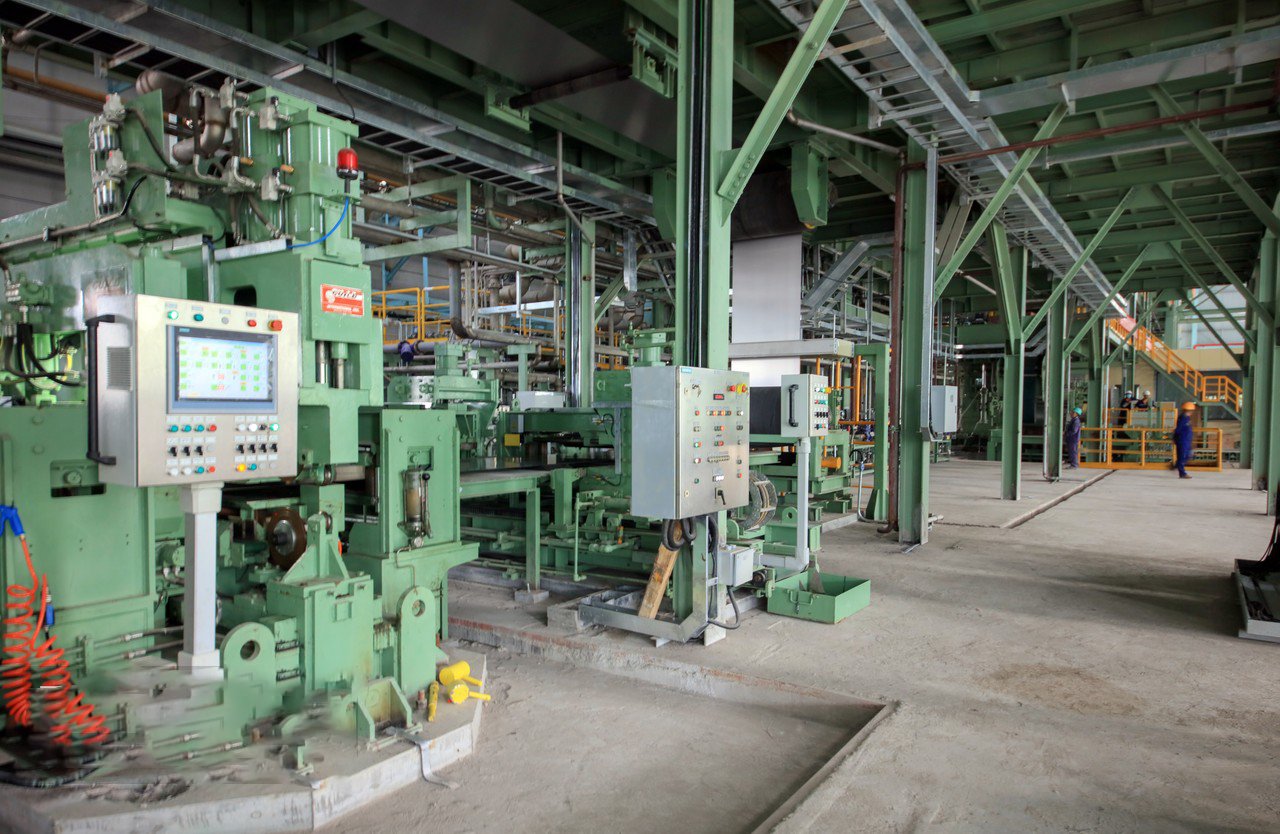
This reliance on outdated materials creates a cascade of operational headaches. Beyond the direct costs of repair, there's the complexity of managing a constant inspection and maintenance schedule. Engineers and technicians spend a significant portion of their time identifying and triaging corrosion hotspots instead of focusing on process optimization and efficiency improvements. Furthermore, the failure of a critical component, like a pipe carrying high-pressure brine, is not just an operational issue but a significant safety risk to personnel. The industry's broad shift towards advanced alloys like duplex stainless steel is a direct response to these persistent challenges. It reflects a maturing understanding that the initial cost of a material is only one part of a much larger equation, where long-term reliability and safety are the most valuable commodities.
Inevitable Corrosion of Carbon Steel
Carbon steel is perhaps the most "traditional" material used in construction due to its low cost and high strength. However, in a saline environment, it is catastrophically unsuited for direct exposure. Without a protective barrier, carbon steel will begin to rust almost immediately upon contact with saltwater spray, let alone full immersion. To make it viable, it must be protected by specialized, multi-layer coating systems or galvanization. This reliance on a coating is its fundamental weakness.
The reality in a busy, industrial environment like a desalination plant is that coatings are inevitably scratched, damaged during installation, or simply degrade over time due to UV exposure and thermal cycling. Once the barrier is breached, corrosion begins in the underlying steel and can quickly spread underneath the intact coating, a phenomenon known as delamination. This creates a constant, expensive cycle of inspection, touch-up, and eventual large-scale recoating, which often requires a shutdown of the affected system.
We worked with a client who had inherited an older plant where carbon steel was used for low-pressure pipework and structural supports. They calculated that nearly 15% of their annual maintenance budget was being spent solely on managing corrosion on these steel elements. The cost of labor, specialized paint systems, and the associated downtime was a significant drain on their resources. This case perfectly illustrates that the "low cost" of carbon steel is an illusion; its true cost is paid out over years of relentless and expensive upkeep.
Limitations of Austenitic Stainless Steels (316/317L)
For many years, austenitic stainless steels, particularly Grade 316L, were considered the go-to "corrosion-resistant" material for desalination plants. Its addition of molybdenum provided a step-up in performance over basic 304 stainless steel. However, as plants have become larger, operating pressures have increased, and they have been built in regions with higher ambient seawater temperatures (like the Persian Gulf or the Red Sea), the limitations of 316L have become starkly apparent.
The primary failure mode for 316L in warm seawater is localized corrosion, specifically pitting and crevice corrosion6. Pitting is an aggressive, localized attack that results in small holes that can rapidly perforate a pipe wall, leading to leaks. Crevice corrosion occurs in tight, stagnant spaces, such as under gaskets, at flange faces, or beneath deposits, where the protective passive layer can break down. Furthermore, in environments where temperatures exceed about 50-60°C, 316L becomes susceptible to chloride stress corrosion cracking (SCC), a dangerous failure mode where the combination of tensile stress and a corrosive environment can cause sudden, brittle-like fractures.
A classic industry example is the frequent failure of 316L heat exchanger tubing in the warmer stages of MSF plants or in heat recovery sections of RO plants located in hot climates. A manufacturing client we supply shared data from one of their customers showing that the average service life of their 316L components in a Red Sea facility was just under five years—a completely unsustainable replacement cycle. This underperformance in real-world conditions is the single biggest driver behind the industry's adoption of higher-alloyed materials like duplex stainless steel.
High Lifecycle Costs and Operational Risks
The culmination of these material deficiencies is a dramatic increase in both the lifecycle cost and the overall operational risk profile of the plant. The financial burden is not just the sum of material and labor costs for repairs; it encompasses the vast, often unbudgeted, expense of production downtime. A desalination plant is a production facility, and when it is not producing water, it is not generating revenue, yet fixed costs like labor and energy often remain.
The table below outlines how traditional materials contribute to higher lifecycle costs compared to a modern alternative. This is a simplified model, but it reflects the realities we see in the industry.
| Фактор стоимости | Углеродистая сталь | 316L Stainless Steel | Duplex Stainless Steel |
|---|---|---|---|
| Частота проверок | High (Annual) | Moderate (Bi-Annual) | Low (Every 5+ years) |
| Тип обслуживания | Coating Repair/Replacement | Weld Repair / Component Replacement | Minimal to None |
| Projected Lifespan (Critical Service) | 5-10 Years (with recoating) | 7-15 Years | 30+ Years |
| Downtime Risk | Высокий | Умеренный | Очень низкий |
| Resulting Lifecycle Cost | Очень высокий | Высокий | Низкий |
Beyond the predictable costs, there is the risk of the unpredictable. A sudden, catastrophic failure of a major pipeline not only causes extensive downtime but also poses a significant safety and environmental hazard. A high-pressure seawater jet from a pipe rupture can cause serious injury, while a large brine spill can damage surrounding equipment and the local environment. Relying on materials that are known to be susceptible to failure in the operating environment introduces a level of risk that is increasingly seen as unacceptable by plant operators, insurers, and regulators. This focus on de-risking operations is a powerful motivator for investing in superior, inherently safer materials like duplex steel from the very beginning of a project.
How can duplex stainless steel overcome these challenges in desalination practices?
Are you looking for a definitive solution to the material failures that plague traditional desalination plant designs? The cycle of corrosion, repair, and risk associated with materials like carbon steel and 316L is a significant barrier to long-term profitability. Duplex stainless steel directly confronts and overcomes these challenges, offering a path to a more reliable, safe, and cost-effective operational future.
Duplex stainless steel overcomes the challenges of traditional materials through its unique chemistry and microstructure, which provide inherent resistance to pitting and stress corrosion cracking in desalination plants, superior strength for safer designs, and a drastically lower lifecycle cost by eliminating the need for frequent maintenance and replacement.
From my vantage point at MFY, I have seen the transformative impact of duplex steel on project outcomes. It effectively solves the puzzle that has challenged desalination engineers for decades. Where carbon steel requires a constant, costly defense against rust, the inherent corrosion resistance of duplex steel, derived from its high chromium and molybdenum content7, provides permanent protection. Where 316L is vulnerable to pitting and cracking in the warm, chloride-rich water of a modern plant, the balanced austenitic-ferritic structure of duplex steel provides robust immunity to these failure modes. I often share a story of a client who was building a facility in a seismically active region. Their initial design used thick-walled 316L pipes. By switching to Duplex 2205, they not only improved their corrosion safety margin but also leveraged its higher strength to reduce pipe wall thickness. This resulted in a lighter, more flexible piping system that was inherently more resilient to seismic stresses—a benefit they hadn't even initially considered. This is a perfect illustration of how duplex doesn't just solve one problem; its superior properties provide a cascade of solutions that enhance the entire project.

This ability to solve multiple problems at once is the core of its value proposition. It’s not simply a one-for-one replacement for an older material; it’s an upgrade that fundamentally changes the reliability and economic model of the plant. By designing with duplex steel, engineers are not just preventing corrosion; they are building systems that require less material, weigh less, and are safer to operate under high pressure. This holistic improvement is why the adoption of duplex stainless steel in desalination is accelerating8. It represents a move away from a maintenance-heavy operational philosophy to a modern, reliability-centered one. The focus shifts from "How do we fix it when it breaks?" to "How do we build it so it never breaks?" Duplex stainless steel is the key that unlocks this more advanced approach, providing the foundation for the next generation of durable and efficient desalination facilities.
Immunity to Common Corrosion Failures
The most significant advantage of duplex stainless steel is its engineered resistance to the exact forms of corrosion that cause traditional materials to fail in desalination service. The problem with 316L, as discussed, is its vulnerability to localized corrosion. Duplex steel's defense against this is multi-faceted and rooted in its chemical composition and microstructure. Its high chromium content ensures a robust passive film, while the significant addition of molybdenum and nitrogen gives it an extremely high resistance to pitting, as measured by its PREN value9. A PREN above 35 for Duplex 2205 and above 40 for Super Duplex 2507 provides a wide safety margin against pitting in even the most aggressive brine streams.
Furthermore, the dual-phase microstructure is key to overcoming chloride stress corrosion cracking (SCC). SCC requires a combination of tensile stress, a specific corrosive environment (chlorides), and a susceptible material. While austenitic steels like 316L are highly susceptible, the ferritic phase in duplex steel has a high resistance to SCC initiation and propagation. The austenite phase provides toughness and general corrosion resistance. This synergistic relationship means that cracks struggle to propagate through the complex, alternating microstructure, effectively arresting the SCC process.
This inherent immunity translates directly into plant reliability. A client who operates multiple RO facilities shared their performance data with us. Their older plants, which used 316L extensively, had an average of three unscheduled shutdowns per year due to corrosion-related pipe leaks. In their newest plant, designed with Duplex 2205 for all seawater and brine service, they have had zero corrosion-related shutdowns in over five years of operation. This is a stark, real-world demonstration of how duplex steel eradicates the common failure modes that plague lesser alloys.
Enhanced Strength for Safer, More Efficient Design
The second pillar of duplex steel's superiority is its mechanical strength. With a yield strength approximately double that of 316L, duplex allows for a paradigm shift in system design. This is not just about saving weight; it's about building systems that are inherently safer and more robust. In high-pressure RO systems, the ability to withstand pressures up to 85 bar (and transient surges even higher) without risk of rupture is a critical safety consideration. The high strength of duplex provides a much larger margin of safety against plastic deformation or bursting.
This strength also allows for more efficient design. The reduced wall thickness made possible by duplex steel means larger internal pipe diameters for the same outer diameter, which can reduce pumping energy requirements by lowering fluid velocity and friction losses. While this effect is minor on a per-pipe basis, when aggregated across kilometers of piping in a large-scale plant, it can contribute to noticeable operational energy savings over the facility's life.
A compelling case study comes from an engineering firm that designs modular desalination units for disaster relief and military applications. For them, weight and footprint are primary design constraints. By using our thin-wall duplex coils to construct the entire frame and piping system, they were able to reduce the total weight of their flagship unit by 30% compared to their previous 316L design. This made the unit air-transportable, dramatically increasing its rapid-deployment capabilities—a critical mission requirement that was only achievable through the high strength-to-weight ratio of duplex stainless steel.
Drastically Reduced Lifecycle Costs and Maintenance Burden
Ultimately, the most persuasive argument for duplex stainless steel is economic. It breaks the expensive cycle of repair and replacement that defines the experience with traditional materials. The "fit-and-forget" nature of a properly designed duplex system fundamentally alters a plant's operational expenditure (OPEX) profile. The budget and personnel hours previously allocated to corrosion management can be redirected to value-added activities like process optimization and proactive maintenance on other equipment.
Let's consider a quantitative comparison. A hypothetical 100-meter run of high-pressure pipe made from 316L might cost $50,000 initially. Due to the risk of corrosion, it may require a full replacement after 15 years, costing, with inflation and labor, perhaps $100,000. It would also require biennial inspections. In contrast, the same run made from Duplex 2205 might cost $75,000 upfront. However, it would require minimal inspection and would not need replacement for the plant's entire 30+ year lifespan. The lifecycle cost of the duplex option would be its initial $75,000, while the 316L option would total over $150,000, not including the cost of lost production during the replacement.
At MFY, we see this logic driving decisions every day. We recently supplied a large order of super duplex coils to a project in a region where skilled labor for specialized welding and repair is scarce and expensive. The project developer's primary motivation for selecting super duplex was to minimize their reliance on future maintenance interventions. They saw the higher initial investment not as a cost, but as a strategic purchase of long-term operational certainty and independence—a testament to how duplex stainless steel provides a powerful solution to the economic and logistical challenges of modern desalination.
What technical recommendations are essential when implementing duplex stainless steel in desalination plants?
You've chosen to build with duplex stainless steel, but are you aware of the specific technical requirements needed to unlock its full potential? Simply selecting the right material isn't enough; improper fabrication or welding can compromise its integrity, leading to premature failure. Following expert technical recommendations is essential to ensure the material delivers the long-term, corrosion-free performance you expect.
Essential technical recommendations for implementing duplex stainless steel include proper grade selection based on operating conditions (PREN), strict control of welding heat input to maintain the austenite-ferrite phase balance, using matching filler metals, and preventing contamination during fabrication.
As a supplier of the core material, our responsibility at MFY extends to ensuring our clients and their fabricators have the knowledge to use it correctly. The success of a project depends on excellence at every stage, from material production to final installation. I often emphasize to engineering contractors that duplex steel, while superior, is less forgiving of sloppy practices than standard carbon steel. A key area of focus is always welding, as this is where the material's carefully balanced microstructure can be compromised. I recall a situation where a fabricator, new to duplex, was using the same high-heat techniques they used for austenitic steels. We intervened and provided on-site consultation, helping them recalibrate their procedures to control heat input and ensure proper post-weld cleaning. This small adjustment preserved the corrosion resistance of the final product and prevented a potentially costly future failure. It is this attention to technical detail that transforms a good material into a great and lasting solution.
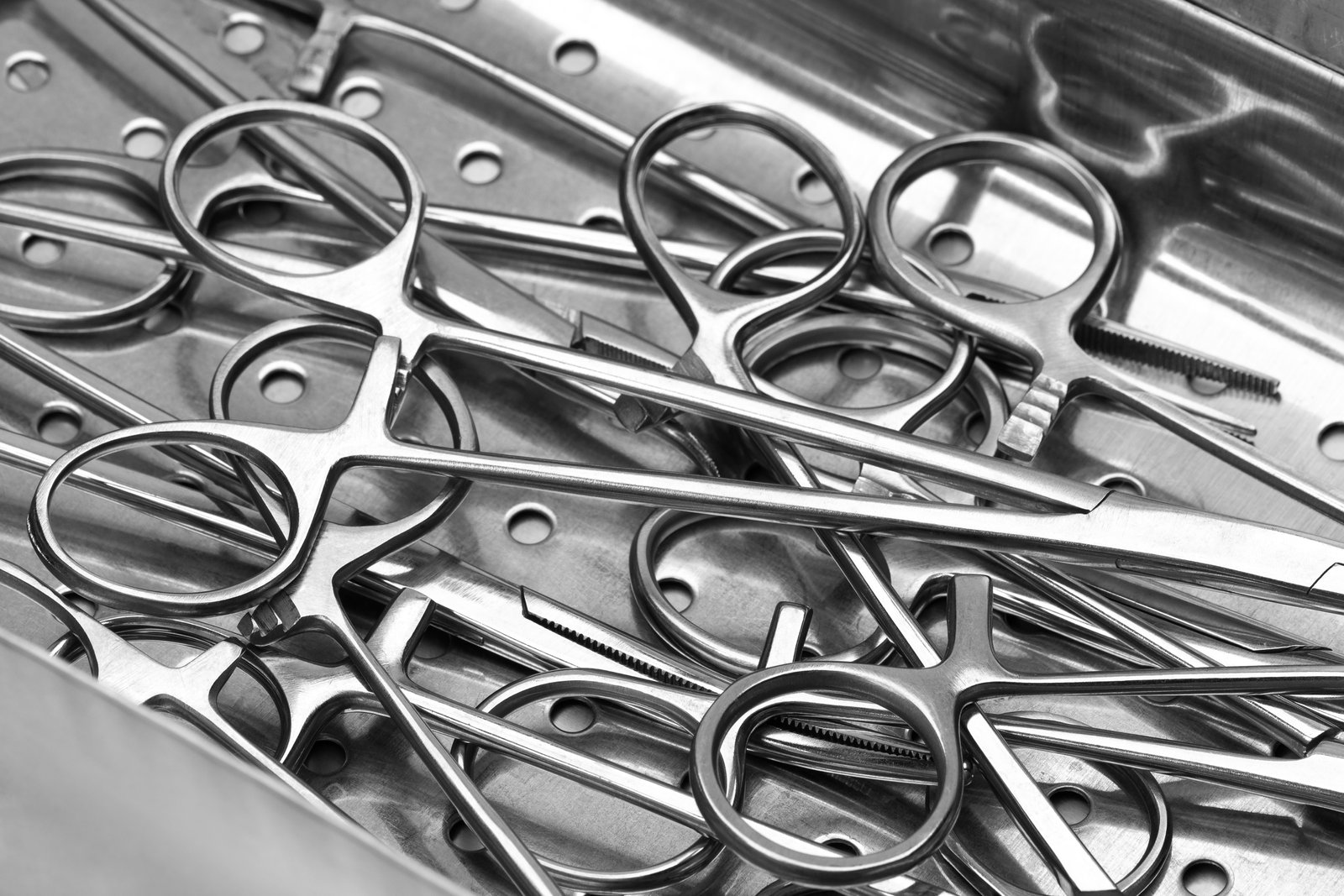
Following these technical guidelines is not about adding complexity; it's about preserving the inherent value of the material you've invested in. A well-executed duplex stainless steel project will deliver decades of trouble-free service, but this outcome is contingent upon proper handling, fabrication, and quality control. The process requires a disciplined approach, from storage and handling on-site to prevent iron contamination10, to the final passivation of weld seams. The fabricators and contractors who achieve the best results are those who treat duplex not just as steel, but as the high-performance engineered material that it is. The recommendations that follow are based on extensive industry experience and best practices, designed to help you ensure your implementation is a success and that the final asset delivers the promised longevity and reliability.
Crucial Grade Selection and Material Specification
The first and most critical step is selecting the correct grade of duplex stainless steel for the specific application. Not all duplex is the same, and the choice between standard duplex (like 2205), lean duplex, and super duplex (like 2507) should be driven by a technical assessment of the service environment. The primary factors to consider are the maximum operating temperature and the chloride concentration of the fluid. The Pitting Resistance Equivalent Number (PREN) is the key metric for this decision.
A common rule of thumb is to use Duplex 2205 (PREN > 35) for general seawater applications where temperatures remain below approximately 50°C. This covers most seawater intake lines, low-pressure piping, and many components in temperate climates. However, for more aggressive services—such as handling warm, concentrated brine reject from an RO system, or for any application in warmer geographical regions like the Middle East or Southeast Asia—Super Duplex 2507 (PREN > 40) is the appropriate choice. Its higher molybdenum and nitrogen content provide the necessary resistance to pitting and crevice corrosion in these more demanding conditions.
When specifying the material, it is crucial to reference international standards like ASTM A790 (for pipe) or ASTM A240 (for plate/coil)11 and to require material test certificates (MTCs) from the supplier. At MFY, every coil we ship comes with a complete MTC detailing the precise chemical composition and mechanical properties, allowing our clients to verify that the PREN value meets their project's specific requirements. This documentation provides essential quality assurance and traceability.
Controlled Welding and Fabrication Procedures
Welding is the most critical part of the fabrication process for duplex stainless steel. The goal of any welding procedure is to create a joint that has mechanical properties and corrosion resistance equal to that of the parent metal. For duplex, this means ensuring the heat-affected zone (HAZ) retains the balanced 50/50 austenite-ferrite microstructure. If the weld is too hot or cools too slowly, an excess of ferrite can form, reducing toughness and corrosion resistance. If it cools too quickly, an excess of austenite can result.
Strict control over heat input is therefore paramount. This is the energy supplied per unit length of the weld, typically measured in kJ/mm. Welding procedure specifications (WPS) must define a narrow, qualified range for heat input. Using filler metals is also highly recommended, even for root passes. These fillers are typically "over-alloyed" with nickel to help promote the reformation of austenite during the weld's cooling phase, ensuring the correct phase balance in the final weld. Common filler metals for 2205 are designated 2209.
Post-weld cleaning is another non-negotiable step. All heat tint (oxides) and slag must be completely removed through grinding, brushing with a dedicated stainless steel brush, and/or acid pickling. Any remaining oxides can become sites for corrosion initiation. We always advise our clients to work with fabricators who have certified experience with duplex steels and who can provide qualified welding procedures for review.
Preventing Contamination and Ensuring Quality Control
The high corrosion resistance of duplex stainless steel can be compromised if the material is contaminated during handling, storage, and fabrication. The most common contaminant is iron. If carbon steel tools (grinders, hammers, wire brushes) are used on duplex steel, or if it is stored in a way that allows contact with carbon steel, free iron particles can be embedded in the surface. In a corrosive environment, these particles will rust, destroying the passive layer and causing localized staining and pitting of the duplex steel.
To prevent this, a dedicated set of stainless-steel-only tools should be used. Fabrication shops should have segregated areas for carbon steel and stainless steel work to avoid cross-contamination from grinding dust. Any accidental scratches or surface contamination should be removed, and the area should be re-passivated. Quality control should include visual inspection for any signs of contamination or poor welding, such as improper weld color (which can indicate overheating) or incomplete cleaning.
A final, crucial quality control step is often a passivation treatment on the finished fabricated component, such as a pipe spool or vessel. This involves treating the surface with a mild acid (like citric acid)12 to remove any free iron and help fully develop a thick, uniform, and highly protective passive layer before the component is put into service. This final "cleaning" step ensures that the duplex steel starts its service life in the best possible condition, ready to provide decades of reliable performance.
Заключение
Ultimately, selecting duplex stainless steel for desalination plants is a strategic investment in reliability. Its superior corrosion resistance and high strength directly counter the failures of traditional materials, ensuring operational longevity, enhancing safety, and delivering the lowest total lifecycle cost for these critical infrastructure projects.
-
Learn the real-world impact of saltwater corrosion and why it is such a serious risk for desalination ↩
-
Discover how alloy technology improvements offer more reliable, long-lived desalination solutions ↩
-
Understand why these forms of corrosion are so damaging and how they occur in water industry settings ↩
-
Learn how RO processes work and why material selection is critical in desalination ↩
-
Learn about the specific problems with traditional materials in desalination environments ↩
-
Explore why 316L stainless steel can fail quickly in seawater conditions ↩
-
Explore the chemical role of chromium and molybdenum in corrosion prevention ↩
-
Discover why global desalination projects favor duplex stainless steel today ↩
-
Understand PREN calculation and why it is crucial for saline water applications ↩
-
Discover why it’s crucial to avoid iron contamination and how it damages stainless steel ↩
-
See the industry standards for pipes and plates to ensure quality material specification ↩
-
Understand how passivation enhances corrosion resistance and longevity of fabricated parts ↩
У вас есть вопросы или нужна дополнительная информация?
Свяжитесь с нами, чтобы получить индивидуальную помощь и квалифицированный совет.
